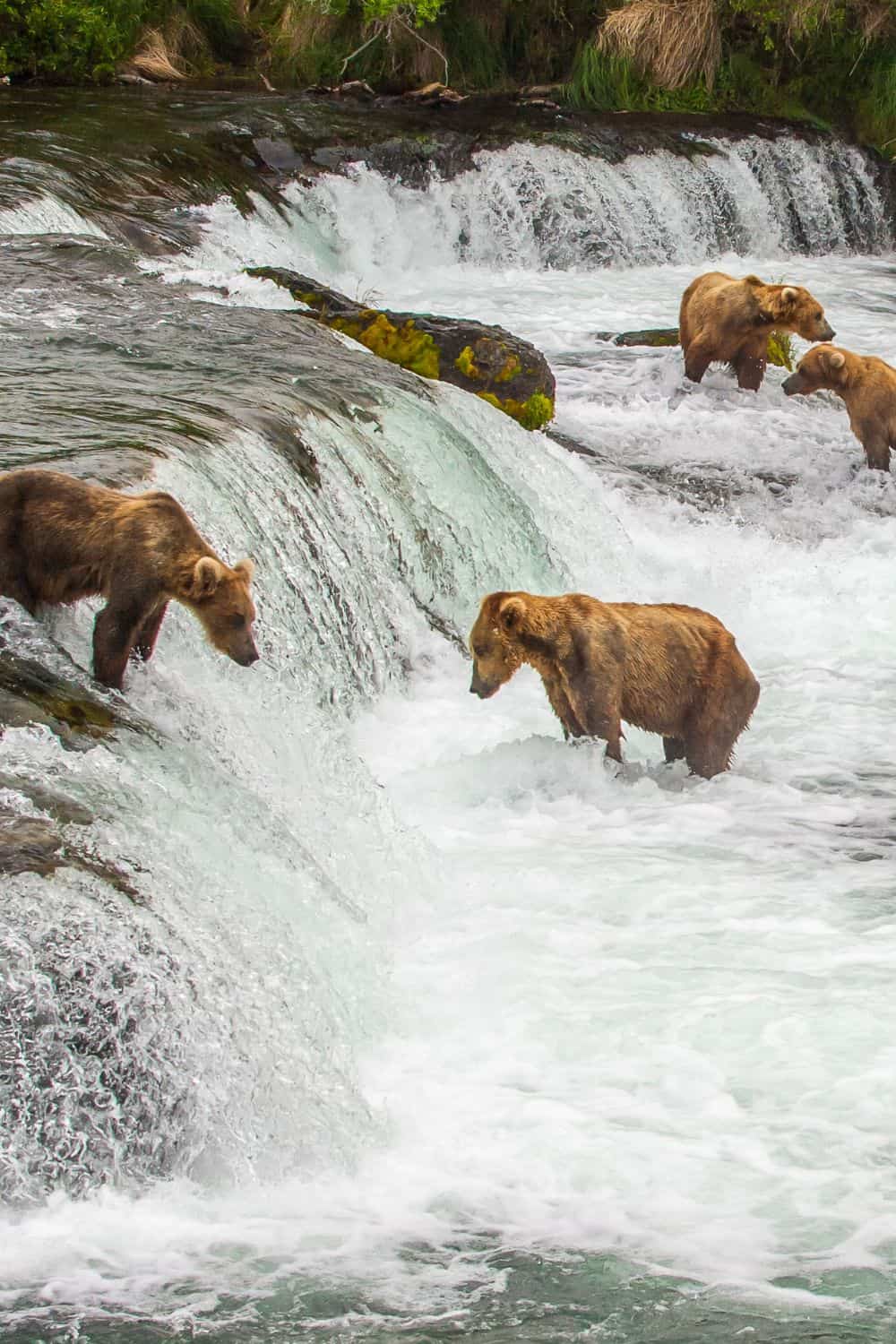
Brown bears, also known as grizzly bears, are one of the largest and most majestic land mammals in the world. Found throughout North America, Europe, and Asia, these powerful animals are known for their size, strength, and ferocity. In this article, we’ll provide you with all the essential information you need to know about brown bears.
Physical Characteristics
Brown bears are typically large and powerful animals, with males weighing up to 600 kg (1300 lbs) and standing up to 2.5 m (8 ft) tall on their hind legs. Females are generally smaller, weighing up to 250 kg (550 lbs) and standing up to 2 m (6.5 ft) tall. Brown bears have a distinctive hump on their shoulders, which is made up of muscle and is used to power their front legs when digging or hunting.
Brown bears are covered in thick fur, which can range in color from light brown to almost black. Their fur provides insulation against the cold and helps them to blend in with their surroundings. Brown bears have long, sharp claws that are used for digging, climbing, and catching prey.
Habitat and Distribution
Brown bears are found in a variety of habitats, including forests, tundra, and alpine meadows. They are found in North America, Europe, and Asia, with the largest populations found in Alaska, Russia, and Canada. Brown bears prefer areas with plenty of food, such as rivers and streams where they can fish for salmon, or meadows and forests where they can forage for berries, nuts, and roots.
Behavior
Brown bears are solitary animals, although they may come together during the breeding season. They are territorial and will defend their territory from other bears, particularly males. Brown bears are primarily active during the day, although they may be active at night when searching for food.
Brown bears are omnivorous, which means they eat both meat and plants. Their diet can include fish, small mammals, berries, nuts, and roots. During the summer, brown bears can eat up to 90 pounds of food per day to build up their fat reserves for the winter months when food is scarce.
Conservation Status
Brown bears are classified as a species of “least concern” by the International Union for Conservation of Nature (IUCN), which means that they are not considered to be endangered. However, some populations of brown bears are still at risk due to habitat loss and hunting. In North America, brown bears are hunted for sport, and their habitat is being destroyed by logging and development.
Safety Tips for Encountering Brown Bears
If you are planning to visit an area where brown bears are found, it’s important to take precautions to avoid a dangerous encounter. Here are some safety tips for encountering brown bears:
- Make noise: Brown bears are more likely to avoid humans if they hear them coming. Make noise while hiking, such as clapping your hands or talking loudly.
- Keep your distance: If you see a brown bear, keep a safe distance. Do not approach the bear, and if possible, move away slowly and quietly.
- Carry bear spray: Bear spray is a type of pepper spray that is specifically designed to deter bears. Carry bear spray with you when hiking in bear country and know how to use it.
- Avoid surprising the bear: Brown bears can become aggressive if they are surprised. Make noise to alert the bear to your presence before you get too close.
- Don’t run: If a brown bear charges you, do not run. Running can trigger a predatory response in the bear. Instead, stand your ground and use bear spray if you have it.
- Store food properly: Brown bears are attracted to food, so it’s important to store your food properly when camping in bear country. Use bear-resistant containers or hang your food from a tree at least 10 feet off the ground and 4 feet away from the trunk.
- Respect the bear’s space: If you encounter a brown bear, do not approach it or attempt to take a photo. Respect the bear’s space and give it plenty of room to move away.
Brown bears are magnificent animals that are found in many parts of the world. While they are not considered endangered, they are still at risk due to habitat loss and hunting. If you are planning to visit an area where brown bears are found, it’s important to take precautions to avoid a dangerous encounter. By following the safety tips outlined above, you can help protect yourself and these amazing animals.
Related posts:
Katmai National Park is a breathtaking wilderness destination located in southwestern Alaska. The park is known for its stunning natural beauty, rugged wilderness, and abundant wildlife, making it a popular destination for outdoor enthusias...
Katmai National Park is a vast wilderness area located in southwestern Alaska, United States. It covers an area of 4,093,077 acres and was established in 1980 to protect the natural and cultural resources of the region. The park is known for its ...
Katmai National Park is located in southern Alaska and is home to one of the largest concentrations of brown bears in the world. These bears are a major draw for visitors to the park, as they offer a rare opportunity to observe these ...
Katmai National Park is located in the southern region of Alaska and is known for its vast wilderness and diverse range of wildlife. The park spans over 4 million acres and is home to some of the most unique flora and fauna in the world. Th...